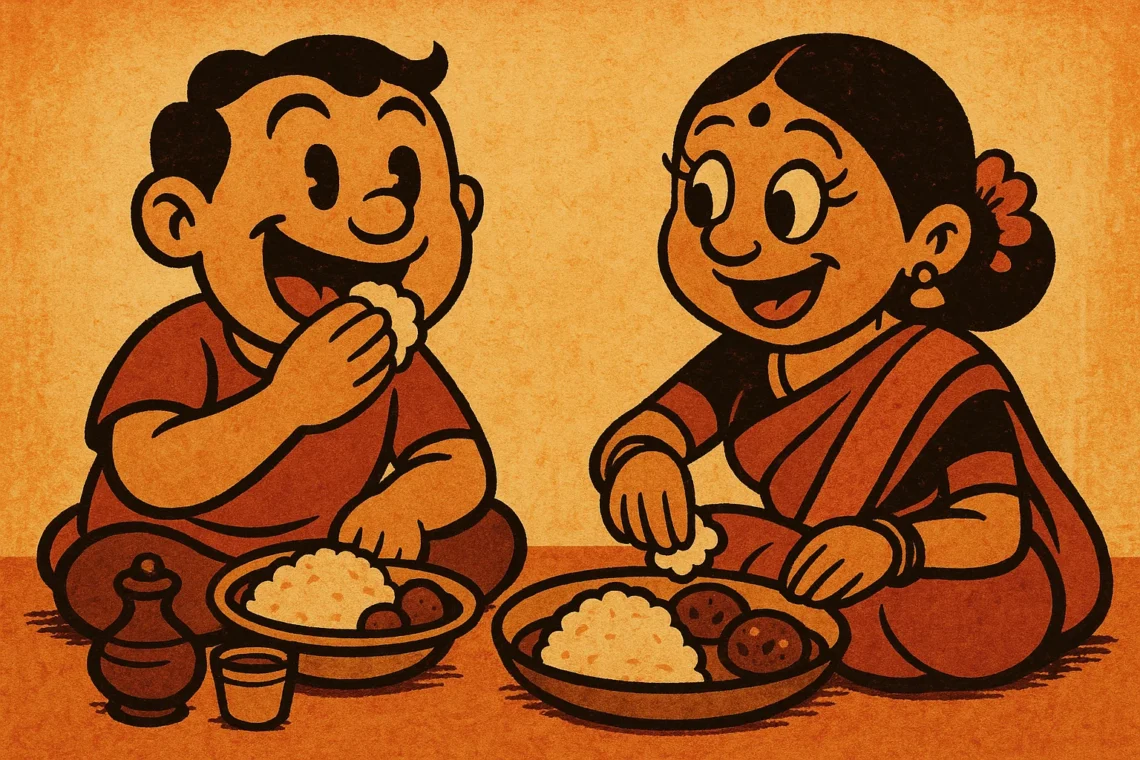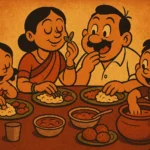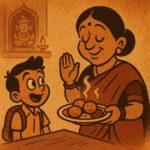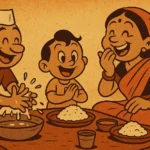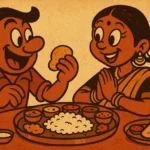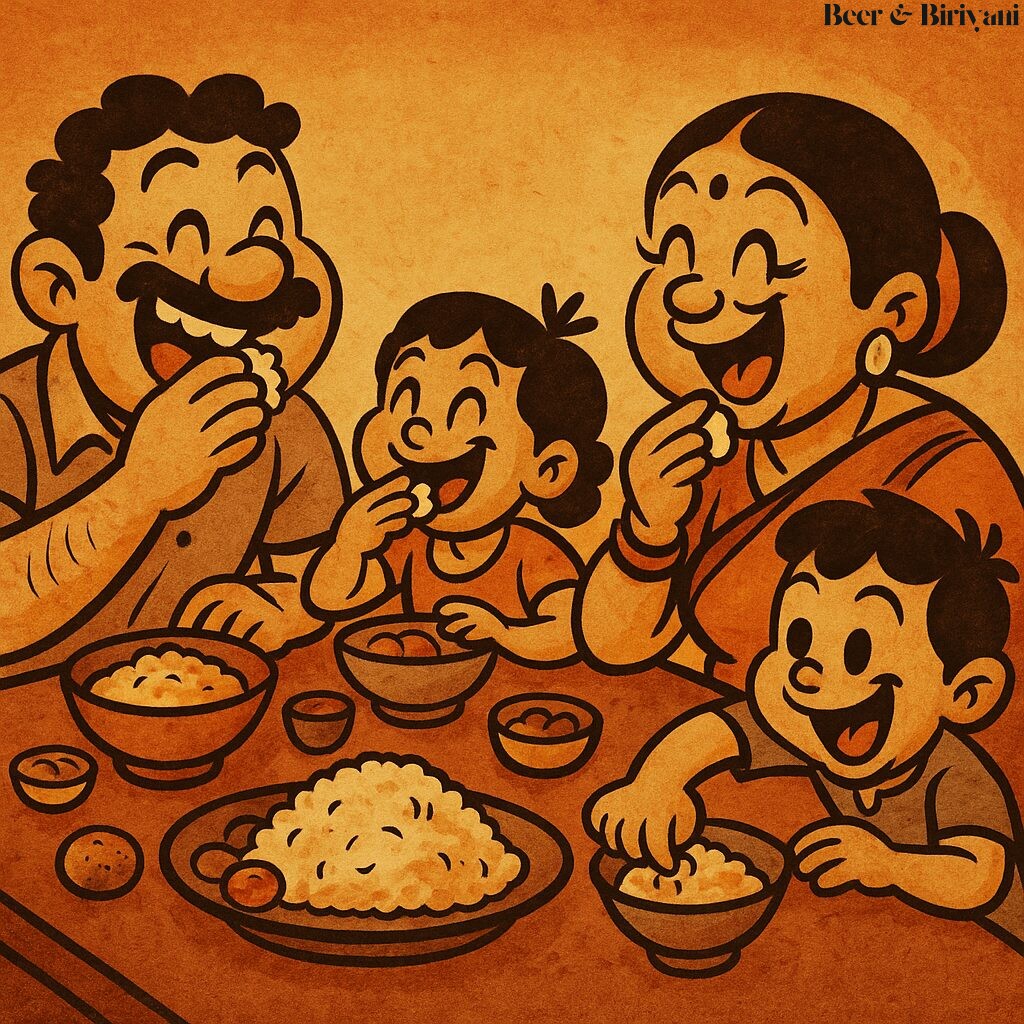If you’ve ever shared a meal in a traditional Indian home, you’ve probably noticed a quiet, deliberate choreography at the table. The plate is placed. The food is served. And the right hand—the dominant hand, the sacred hand—does all the eating. No forks, no knives, no dabbling with both hands. The left stays respectfully on the side, maybe holding the edge of the plate or resting on your lap. Eating, in this space, is not just nourishment. It’s a practice. A kind of etiquette passed down with the same firmness as bedtime or temple conduct. And one of the oldest rules is this: eat only with your right hand.
As a child, I never questioned it. I was corrected gently, but consistently. “Use your right hand.” “Don’t touch food with your left.” “Hold the banana leaf with your left, eat with your right.” It wasn’t a scolding—it was instruction. A rule that belonged to the table as much as salt and steel tumblers did.
Clean vs. Sacred
Traditionally, the right hand is seen as the cleaner, purer hand—not just for hygiene, but for intention. In most Indian households, especially in older generations, the left hand was reserved for “other” duties: personal hygiene, handling footwear, cleaning. The right hand was for giving, for eating, for blessing. Even in rituals, offerings to deities are made with the right hand. So eating—an act considered intimate, even sacred—is naturally reserved for the same hand.
But it’s not just about purity. It’s about presence. Eating with your hands—and specifically your right hand—forces you to be there, at the table, fully. You mix the rice and curry. You feel the texture. You shape the bite. You use your fingers as a tool of connection, not just consumption. And there’s a kind of mindfulness that grows from this. A rhythm. A respect.
Learning the Dance
I still remember the slightly awkward learning curve—how to mix rice with dal using just three fingers and a thumb, how to scoop without spilling, how to eat curd rice delicately without it slipping through. And the ultimate mastery: tearing roti with one hand. That was the litmus test. You weren’t really grown up until you could break off a perfect piece of roti using just your right hand, fold it into a little pocket, and scoop sabzi like a pro.
Of course, some foods made this easier than others. Khichdi was forgiving. Rasam rice was risky. Fish curry? You needed strategy. But no matter the dish, the rule remained. If you ever slipped and reached for food with your left, someone would gently clear their throat. No shouting. Just quiet correction. A reminder of the many small rituals that form the invisible backbone of our meals.
What the Hand Remembers
Even now, after years of eating across cultures—with chopsticks, spoons, even fancy fondue forks—I return to this rhythm when I eat Indian food. Automatically. My left hand retreats. My right takes over. It doesn’t feel rigid. It feels like home. Like something deeper than habit. Like a muscle memory of my mother’s table, of sitting cross-legged on the floor during weddings, of temple lunches on banana leaves where no one spoke, but everyone knew exactly what to do.
Not Right vs. Wrong
This isn’t to shame lefties or scold modern cutlery. Plenty of left-handed people in India quietly reverse the rule, adapting it to their needs. It’s not about dogma. It’s about intention. A cultural gesture rooted in respect—for the food, for the act of eating, for the people who fed you. It’s a reminder that meals were never meant to be mechanical. They were meant to be felt.
So yes, in my house, I still eat with my hands. My right hand. Not out of compulsion, but because it feels like the most honest way to connect to the food I grew up with. Each pinch, each scoop, each carefully constructed bite feels like a continuation of a story that started long before me.
Because eating with the right hand isn’t just about tradition. It’s about attention. And love, expressed through fingertips.
Born in Mumbai, now stir-frying feelings in Texas. Writes about food, memory, and the messy magic in between — mostly to stay hungry, sometimes just to stay sane.

